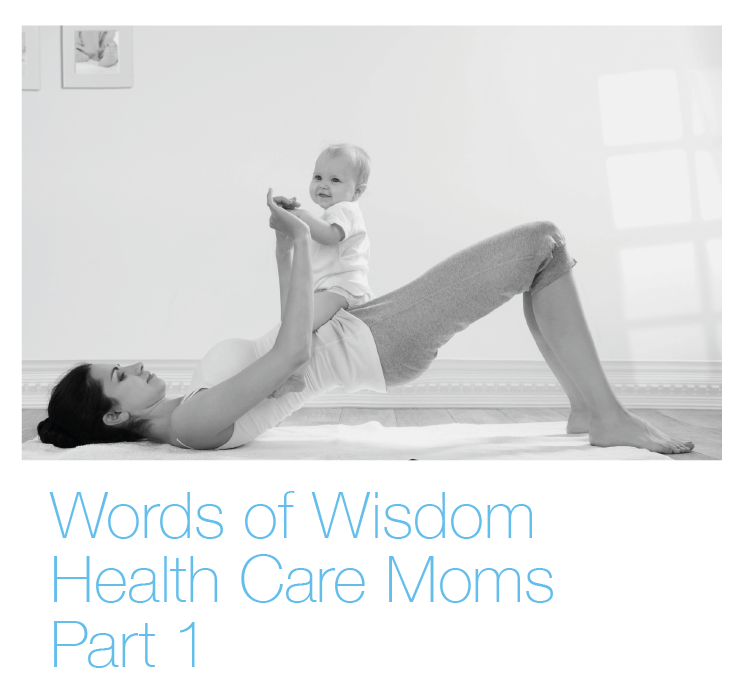Words of Wisdom from Healthcare Moms – Part I
By Susan Czyzo (Bachelor of Physical Education and Health, Master of Science in Physical Therapy)
Mother’s Day is almost upon us for another year. We may express different levels of enthusiasm for the day itself but hopefully we all appreciate and acknowledge the dedication of these tireless individuals. In honour of all moms this month, I solicited recommendations from new moms who work as allied health professionals on the topics of body mechanics, returning to work and exercise, and pelvic floor health post-partum. Below is a summary of their insights and perspectives, Part I of II.
Body Mechanics with and without Baby
Caring for your baby involves a great deal of repetitive movements and sustained postures, placing strain on your already strained body. Unfortunately this does not get any easier as the baby grows and you’ll quickly realize that body mechanics post-partum consist of a struggle between the safety of the baby and the safety of your body. The optimal way to maximize your safety is to plan your baby environment ahead of time and make adjustments as necessary. Some valuable practical tips:
If you’re breast-feeding, consider the amount of time you are spending in this position daily. It is worth planning your positioning for breast-feeding in advance. Propping yourself and your baby with pillows is highly recommended.
If your baby is having a hard time sleeping and you’re spending a lot of time at the crib, try sitting on a gym ball and feeding your hand through the rails instead of spending prolonged periods leaning over the crib.
Keep the cot base high for as long as it is safe for the baby.
Avoid standing off midline and crossing your legs when seated. This places unilateral strain through your pelvis and can contribute to sacroiliac joint pain.
Mindfully activate your core prior to and during all baby-related movements and transfers. This takes plenty of focus and practice in order to make it automatic.
Many new moms experience difficulty with self-transfers, standing and walking early post-delivery, regardless of delivery method. The degree of difficulty varies but tends to be of great concern for new moms given the pressure of having a new baby to carry and hold, as well as adjusting to physical limitations that they often have never experienced before. While undergoing these challenges, remember the significant changes your body has been through in the last 9+ months and accept that it will take time to heal and move normally again.
Regular stretching of your pectoral muscles, in combination with mobilising into thoracic extension and strengthening your scapular retractors, will go a long way towards alleviating the postural discomfort that develops with carrying your newborn, breast-feeding, pushing the stroller and so on.
Pelvic Floor Health
Start Kegel contractions post-partum as soon as pain allows. A great time to do them is while breastfeeding since you’re doing this often and can’t do much else simultaneously.
Most physiotherapists would agree that every new mom should be made aware of the existence of women’s health physiotherapists, including their level of expertise and reasons to schedule a visit pre and/or post-partum.
Communicate honestly with your women’s health physiotherapist. Sometimes when we treat patients who work in similar fields, we can erroneously assume that our patients are already quite aware of the issue at hand and therefore run the risk of not providing adequate education and treatment.
Look out for
Part II of Words of Wisdom from Healthcare Moms – Returning to Work and Exercise
APPI Ante/Post Natal Pilates Training
For more information on Ante/Post Natal Pilates training view our course outline and upcoming dates.
If you are looking for an APPI Certified Pilates Instructor and Physiotherapist
view our instructor finder.
